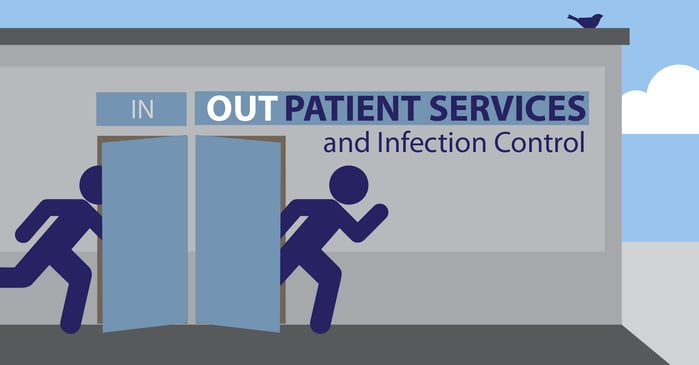Outpatient Services and Infection Prevention: An Introduction [Part 1]
![Outpatient Services and Infection Prevention: An Introduction [Part 1]](https://blog.eoscu.com/hs-fs/hubfs/Small_Blog_Headers/Outpatient_Services-01.jpg?width=950&name=Outpatient_Services-01.jpg)
 In late January of 2016, the CDC issued a health advisory “urging dialysis providers and facilities to assess and improve infection control practices to stop Hepatitis C virus transmission in patients undergoing hemodialysis.” This advisory was released after an increase in Hepatitis C infections, and the preliminary evidence that transmission from patient to patient had taken place in at least 9 clinics. This advisory brought to mind the issue of infection in other outpatient settings and inspired the topic of this series, “Outpatient Services and Infection Prevention.”
In late January of 2016, the CDC issued a health advisory “urging dialysis providers and facilities to assess and improve infection control practices to stop Hepatitis C virus transmission in patients undergoing hemodialysis.” This advisory was released after an increase in Hepatitis C infections, and the preliminary evidence that transmission from patient to patient had taken place in at least 9 clinics. This advisory brought to mind the issue of infection in other outpatient settings and inspired the topic of this series, “Outpatient Services and Infection Prevention.”
Many of us picture medical care taking place in a doctor’s office or in a hospital. But for millions of Americans, certain procedures, as well as long-term or on-going medical care, take place in an outpatient setting, a medical facility that is neither a doctor’s office nor an acute care facility like a hospital. Just what are outpatient services? And how are they affected by infectious pathogens?
Outpatient services focus on medical care for a patient that takes place outside of a hospital admission. Some hospitals provide outpatient services, but the patient stays for a short time and is not admitted for an overnight stay. (Outpatient settings are also referred to as “ambulatory care” centers, from the Latin ambulare, “to walk.”) Other services are provided by medical centers specializing in a certain condition, such as a chemotherapy center, or at clinics, rehabilitation centers, and many other facilities.
Depending on the type of outpatient services provided, infection can be a significant concern. Some facilities offer outpatient surgeries, where surgical site infections are a risk. Further risks follow the patient home, where he or she is responsible for wound care. Other facilities offer medical therapies that require use of a medical device which can contaminate the patient and at times, may remain in the patient between visits to the center. During hemodialysis, the procedure leading to the infections in the CDC’s health advisory mentioned above, the patient’s blood is filtered through a machine and returned to the body. If that blood is contaminated, the patient could get a bloodstream or other infection, many of which are life-threatening.
In all outpatient settings, however, as in hospitals, infection control is of vital importance. In this series, we will explore the rules, monitoring, tracking and training about hand hygiene, injection safety, environmental disinfection, and other elements of infection control in the outpatient setting. We hope you follow us as we explore this emerging issue in healthcare!
Read the Full Series
|
|
| Part 1: What are Outpatient Services? | Part 4: Tracking Infections |
| Part 2: What is Ambulatory Care? | Part 5: Room for Improvement |
| Part 3: Outbreaks & Reporting | |
Editor's Note: This post was originally published in March 2016 and has been updated for freshness, accuracy and comprehensiveness.
![EOScu Logo - Dark - Outlined [07182023]-01](https://blog.eoscu.com/hubfs/Eoscu_June2024/Images/EOScu%20Logo%20-%20Dark%20-%20Outlined%20%5B07182023%5D-01.svg)

![Outpatient Services and Infection Prevention: Tracking Infections [Part 4]](https://blog.eoscu.com/hs-fs/hubfs/Small_Blog_Headers/Outpatient_Services-01.jpg?height=500&name=Outpatient_Services-01.jpg)


